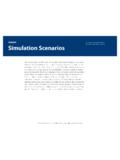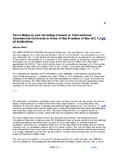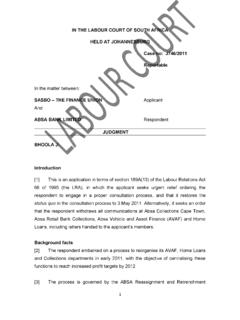Transcription of Case Presentation #5: “Pain, Paresthesia, Paresis, …
1 Case Presentation #5: pain , Paresthesia, Paresis, and PulseFULness Case Presentation #5: pain , Paresthesia, Paresis, and PulseFULness 1 Case Presentation #5: pain , Paresthesia, Paresis, and PulseFULness Presented by Loren Yamamoto, MD, MPH, MBA, FAAP, FACEP An 18-year-old male arrives in the ED complaining of right forearm pain . He had gone on a drinking binge the previous night. He recalls falling off a bar stool and onto his arm. His next recalls waking up in the back of his friend s pick-up truck. He is ambulatory and cooperative. He is only minimally able to move his right hand (1). The PAT is as follows Appearance: Alert and cooperative. Work of Breathing: Normal. Circulation to the Skin: Normal except for his right forearm which is noted to have some areas of hyperemia.
2 Vital Signs Include Heart rate: 70 bpm Respiratory rate: 16 breaths/min Blood pressure: 120/80 mmHg Temperature: C Weight: 80 kg Initial Assessment A: Normal. B: Normal. C: Normal. Perfusion of his right hand and fingers is normal. Capillary refill time is 2 seconds. Pulse oximetry in his fingers reveals a normal perfusion waveform. D: Not able to move his right hand well. His right forearm is slightly swollen with no angular deformity. He complained of moderately severe pain in his forearm, yet his skin was hypoaesthetic. He is able to move his elbow. E: His back reveals a geometric shaped bruise approximately 7 cm in diameter. Focused History S: Alcohol binge, fall onto his arm, pain , paresthesia, paresis. A: No allergies. M: None. P: Healthy.
3 L: Ate half a sandwich before having his friend drive him to the ED. E: No fever. Alcohol binge and a fall. Case Presentation #5: pain , Paresthesia, Paresis, and PulseFULness Case Presentation #5: pain , Paresthesia, Paresis, and PulseFULness 2 Detailed Physical Exam Skin: No additional findings. Findings are limited to his right forearm and the bruise lesion on his back. Head: Normal. Chest: Normal. Heart: Normal. Abdomen: Normal. Neurologic examination: Unable to move his right hand well, hypoaesthesia of his hand. Key Questions What is your general impression of this patient? Characterize the patient s condition as one of the following: Stable Respiratory Distress Respiratory Failure Shock Primary CNS/Metabolic Dysfunction Cardiopulmonary Failure/Arrest Core Knowledge Points General Impression He is stable from a cardiopulmonary standpoint.
4 Does he have an emergent condition due to his forearm? Key Questions What are your initial management priorities? Radiographs of his right forearm. These are obtained and are normal. Critical Actions Cellulitis is suspected. He is given IV morphine and IV ceftriaxone. Compartment syndrome should be suspected. Measurement of the intracompartmental pressure is essential. Case Development The diagnosis of compartment syndrome is considered, but the clinicians are skeptical because: There is no fracture present. The published signs and symptoms of compartment syndrome include the 6 P s: pain , paresthesia, paresis, pallor, pulselessness, poikilothermia. While pain , paresthesia, and paresis are present, there is no pallor, distal circulation is good, and the forearm is warm.
5 Case Presentation #5: pain , Paresthesia, Paresis, and PulseFULness Case Presentation #5: pain , Paresthesia, Paresis, and PulseFULness 3 How is the bruise on his back possibly related to compartment syndrome? Case Development Differential Diagnosis: Occult fracture, peripheral nerve palsy, compartment syndrome, cellulitis, rhabdomyolysis, vascular injury, deep venous thrombosis, gas gangrene, necrotizing fasciitis His intracompartment pressure is measured as 72 mmHg (exceeding the 30 to 45 mmHg critical range). Key Question What do these results indicate? Compartment syndrome is confirmed. Core Knowledge Points Possible Diagnosis Although the published signs and symptoms of compartment syndrome include the 6 P s: pain , paresthesia, paresis, pallor, pulselessness, poikilothermia, the latter three are NOT signs of an early compartment syndrome.
6 It is essential for this diagnosis to be made early if a good outcome is to be achieved. Core Knowledge Points Compartment Syndrome (1) Compartment syndrome (CS) is the result of increased pressure within a closed anatomical space. As such, any area of the body which contains a compartment can be affected, namely the hand, forearm, upper arm, entire lower extremity, abdomen, and buttocks. As the intracompartmental pressures increase and exceed the perfusion pressure, tissues become ischemic and may become necrotic without timely intervention. Compartment Syndrome (CS) is a thus a limb- and even life- threatening condition. Patient prognosis depends upon the timeliness of diagnosis and intervention. Therefore, time is critical. It is generally accepted that 6 hours is the upper limit of tissue viability (2).
7 Traditionally, the "6 Ps" ( pain , paresthesia, paresis, pallor, poikilothermia, and pulselessness) were used to clinically diagnose CS; however pulselessness and pallor are usually NOT present in a compartment syndrome (3). Additionally, poikilothermia is not a term which is commonly used. Thus, only 3 Ps remain. Learn the three important Ps of pain , paresthesia and paresis and do not rely on the other three. In the pathophysiology of CS, venous outflow resistance is increased, ultimately leading to a cessation in blood flow. CS is really a venous obstruction rather than an arterial infarction. Venous outflow is impeded when the compartment pressure exceeds about 30 mmHg. As the compartment pressure rises, all the veins are compressed and venous outflow is blocked. Since venous outflow is blocked, perfusion of the tissues within the compartment ceases.
8 There may still be arterial Case Presentation #5: pain , Paresthesia, Paresis, and PulseFULness Case Presentation #5: pain , Paresthesia, Paresis, and PulseFULness 4 pulsation of the larger arteries within the compartment and distal to the compartment because the systolic pressure still exceeds the compartment pressure. In addition, arterial blood may continue to flow through arteriolo-arteriolar shunts, thus distal pulses may still be present (2, 4, 5). Pulsation within larger arteries, however, will not result in any capillary circulation ( , no cellular perfusion is present), because venous outflow is blocked. Avoid this pitfall: pulselessness is NOT present in early cases of compartment syndrome. Do not use the presence of pulses to rule out a compartment syndrome, because this will cause the diagnosis to be delayed beyond the point of salvage.
9 Consider a more extreme example. If the two iliac arteries are ligated, there is obviously no flow through the iliac arteries. Yet, a finger placed on the iliac arteries (proximal to the ligation) would still yield pulsation. Again, the presence of pulsation does not necessarily equate to blood flow. Similarly, pallor may not be evident in a compartment syndrome. The skin outside the compartment may be normally perfused since only intracompartmental perfusion may be affected. Even if the venous outflow of the skin is impeded, the appearance of the skin would be that of venous congestion and NOT pallor. pain , however, is a reliable indicator of compartment syndrome. CS should be suspected if the patient complains of severe pain following any injury to an extremity. Often, the pain is more severe than one would expect from the injury.
10 Severe pain after splinting or casting should raise the possibility of CS. The pain may occur at rest or with certain movements, such as passive stretching of the muscles or active flexion/extension. The pain can be described as a burning sensation, and it is not usually relieved by pain medication or splinting. Paresthesia will ultimately develop as nerve conduction slows in hypoxic/ischemic conditions. A later finding in CS, paresis or paralysis may set in as motor neurons start to dysfunction. The extremity may also feel tense or hard (2, 5). The anterior distal lower extremity is cited as the most common site of compartment syndrome. The reason for this location is probably due to its high frequency of injury. The usual cause of CS is a fracture. However, the incidence of CS following a fracture is actually very small.







